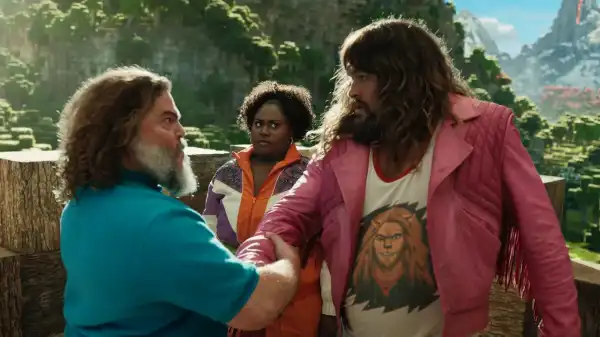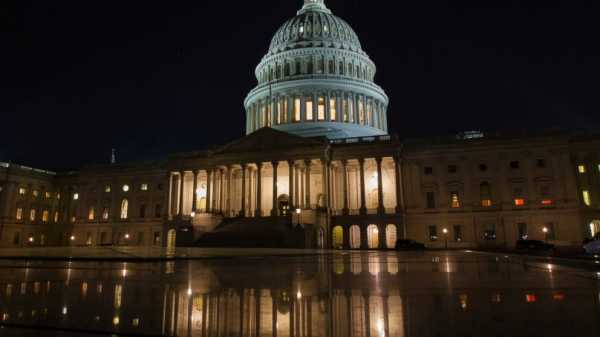
Save this storySave this storySave this storySave this story
I’ve never played Minecraft, but I’m also not a Christian, and I’ve always admired the distinctly Mormon cinematic universe of Jared Hess, director of A Minecraft Movie. He made his name with 2004’s Napoleon Dynamite, which only vaguely reflected its spiritual milieu, its lack of secular pop culture and adolescent smut. He followed that with Nacho Libre, starring Jack Black as a monk who enters a wrestling ring to save a monastery, and in 2009, Gentlemen Broncos, a heavenly and sordid vision of teen gospel. His 2015 satire Don Verdean is explicitly set in church communities and involves relic smuggling in Israel; his 2016 comedy Masterminds is a heist focused on grace and holy innocence.
With A Minecraft Movie, I was looking forward to seeing what Hess would do with another extreme fantasy world akin to Gentlemen Broncos. The short answer: too much and not enough; the IP is the boss, the characters are his henchmen, and Hess, constrained by script material he didn’t write and the demands of complex CGI, struggles to live up to his own creativity, which is among the most significantly weird (or weirdly meaningful) in contemporary cinema. Flipping between realistic settings and synthetic video-game worlds, A Minecraft Movie isn’t nearly as wildly original, as inventively crafted, or as deeply personal as his previous films. This isn’t Barbie; the action is overtly commercial and brazenly traditional. Still, there’s enough personality to make me wish Hess had more freedom.
Here’s what I learned about the source material: In the game, players mine resources and use them in a limitless realm of possibility called the Overworld to create almost anything they want. But the realm faces a variety of threats, including creatures called Piglins from a nihilistic underworld, so players must fight to protect their creations. (The Minecraft universe also mimics the lo-fi graphics of previous generations of games, keeping its entities simple and pixelated — even the object called the Sphere is depicted as a cube.)
The film stars Jack Black as a bored doorknob salesman named Steve, based on the original Minecraft default avatar; the action begins when Steve quits his job and, in pursuit of his life's dream, heads to the local mine. There, he discovers the film's MacGuffins, the Orb of Domination and the Earth Crystal – and is promptly ejected from this world into the Overworld. But his joyful, free-spirited creativity is thwarted by the leader of the piglins, Malgosha (voiced by Rachel House), who seeks the two objects to control the Overworld; to protect them, Steve hires Dennis, a wolf he met and tamed, to carry them home and hide them under his bed. Years later, Garrett “Garbage Man” Garrison (Jason Momoa), the pompously scruffy owner of a dingy video game store in the small town of Chuglass, Idaho, buys the long-lost Steve's belongings at auction – and instead of the vintage Atari he was expecting, he finds the Orb and the Crystal.
Then, two siblings, Natalie (Emma Myers) and Henry (Sebastian Hansen), move to Chuglass to fulfill their mother's dying wish. Henry, a science prodigy, tries to keep the bullies at his new school at bay by building a jetpack, which, through no fault of his own, causes a serious accident. He hides out in Garrett's shop and, with the help of the Orb and the Crystal, accidentally sends himself and Garrett into the Overworld. Natalie and a real estate agent named Don (Daniel Brooks), searching for the missing Henry, also travel to the Overworld, and the four team up with Steve on a painfully typical adventure to fight monsters, find another Crystal, save the Overworld (and Dennis), and get home.
Don’t confuse my curiosity with enthusiasm. I can’t recommend The Minecraft Movie to anyone, not even kids. (I try in vain to imagine a childhood I didn’t have in which I might have found such a movie entertaining.) The film is clearly rife with Easter eggs and in-jokes for Minecraft diehards; one viral moment involves audience members shouting “Chicken Jockey!” (as they did at my local multiplex on Sunday), and in one instance reportedly with such fury that the police were called to the scene. What caught my attention, however, albeit intermittently, was another set of references inserted throughout the film: to Jared Hess’s cinematic universe. If these connections go widely unacknowledged, it’s because Hess’s work has been unfairly ignored by most critics, let alone audiences.
The Idaho setting is both personal—Hess grew up there—and a nod to Napoleon Bonaparte.
Sourse: newyorker.com






